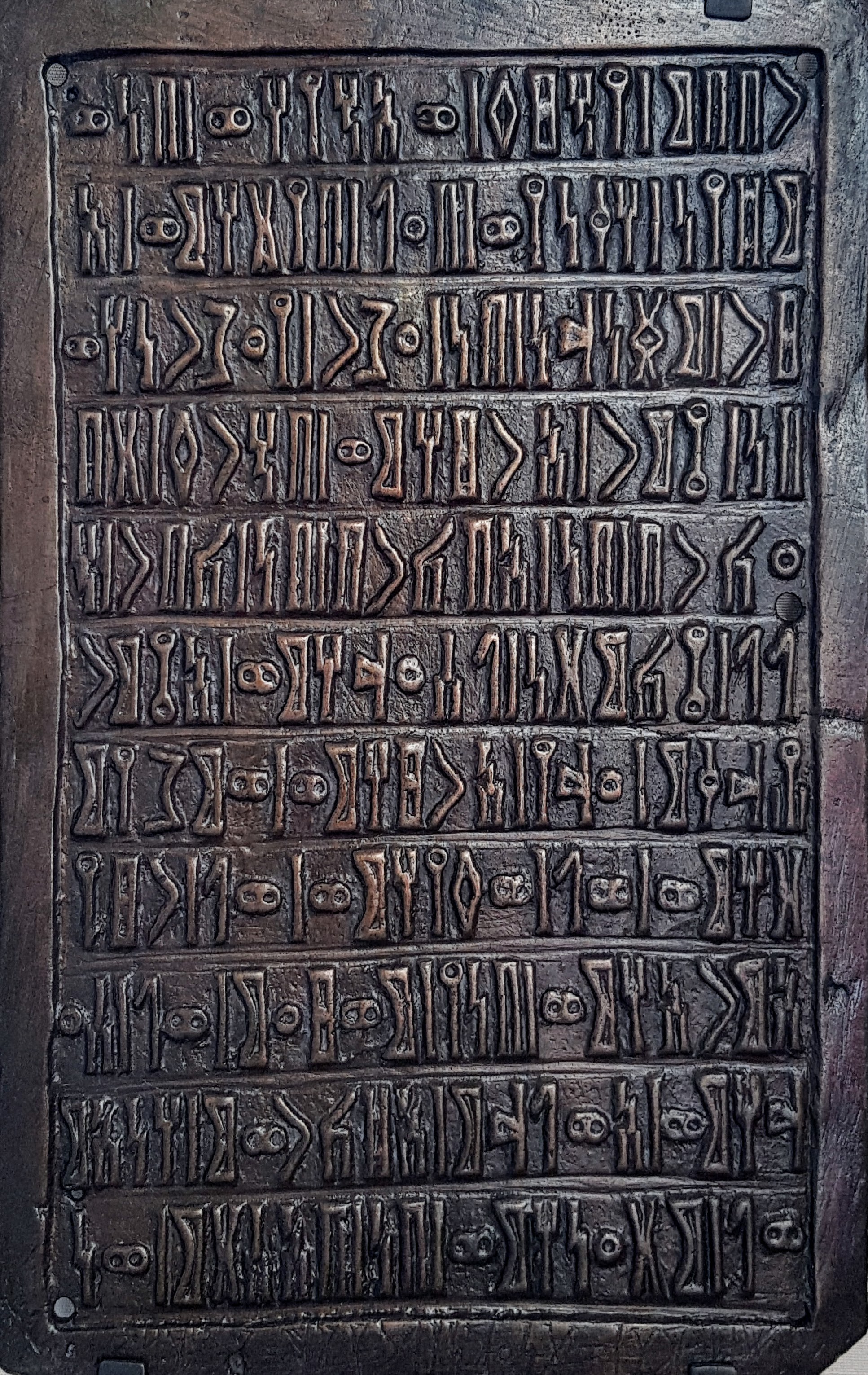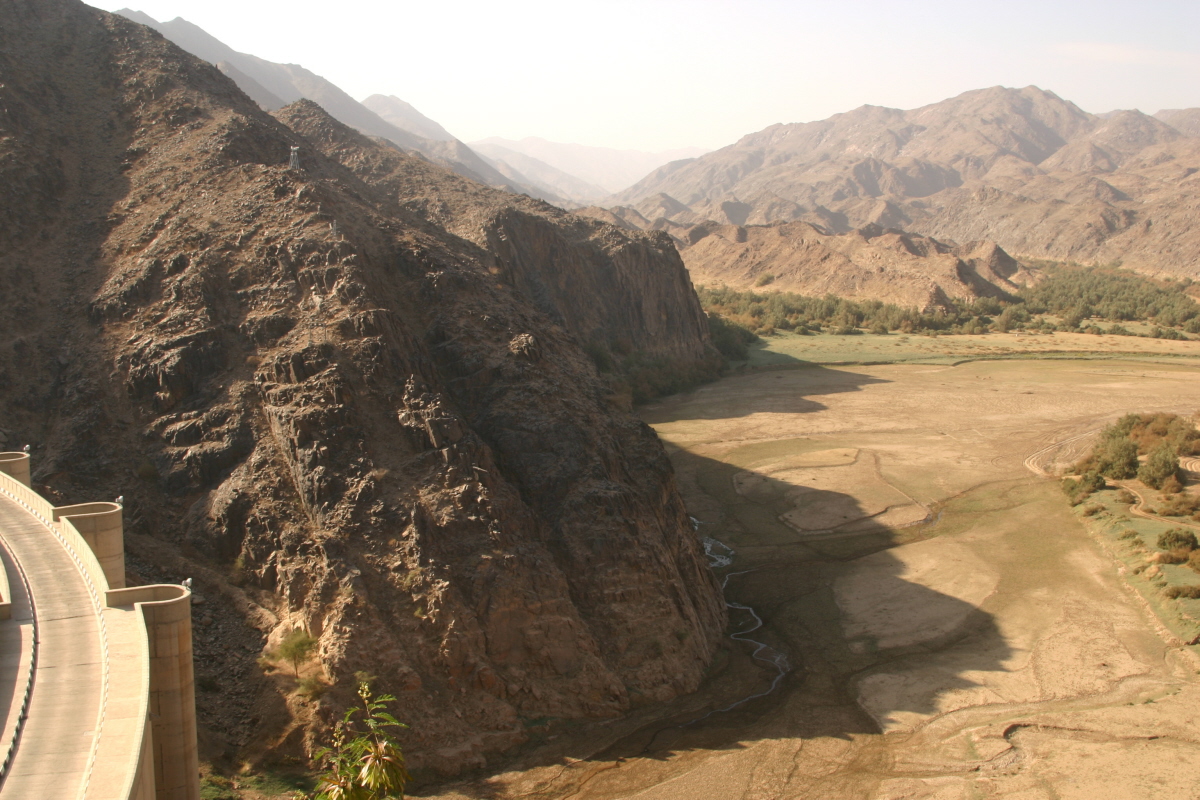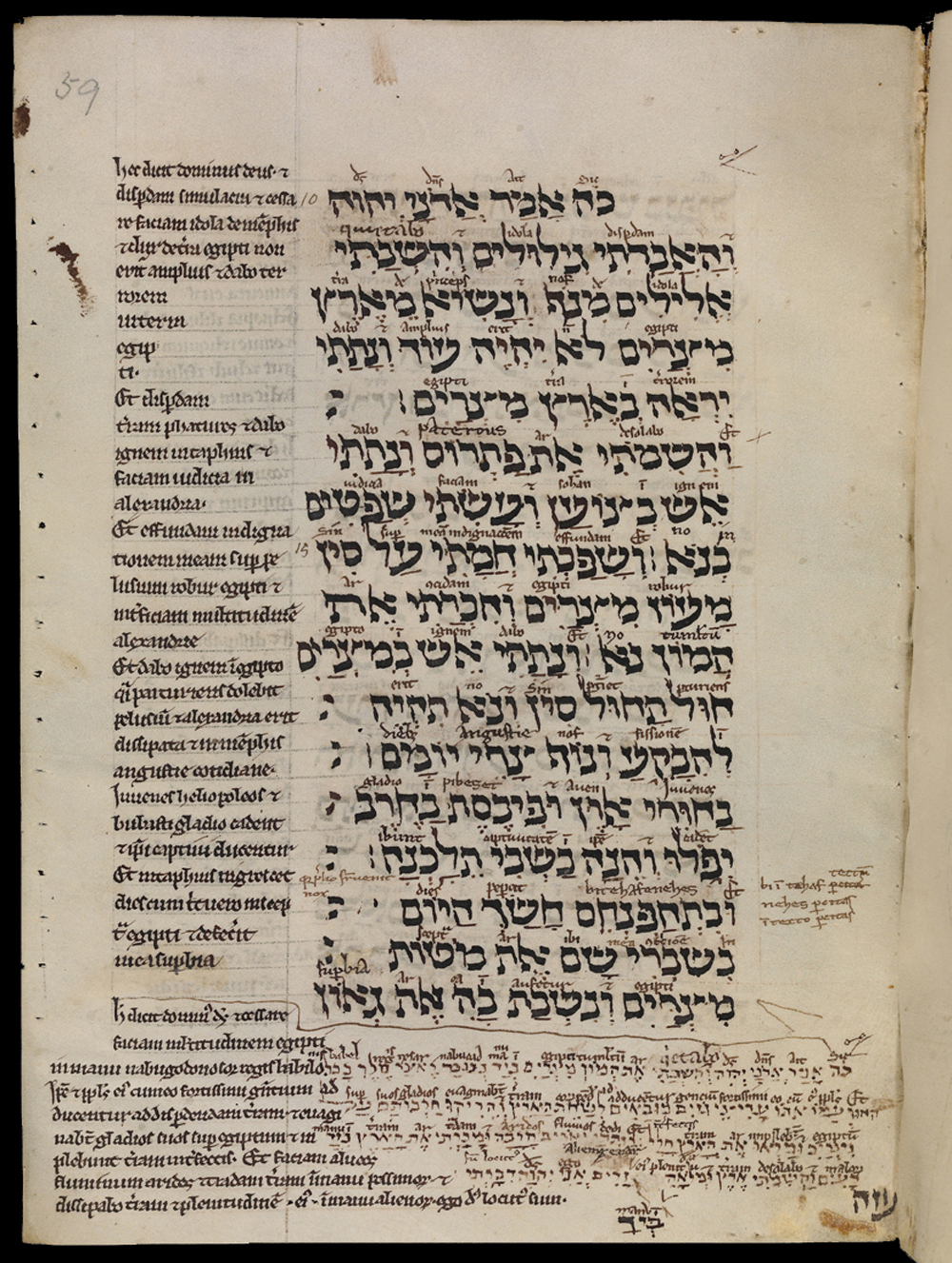|
Najrān
Najran ( '), is a city in southwestern Saudi Arabia. It is the capital of Najran Province. Today, the city of Najran is one of the fastest-growing cities in the kingdom of Saudi Arabia. As of the 2022 census, the city population was 381,431, with the population of the governorate of Najran being 592,300. Today, the population is primarily Ismaili with a Sunni minority. The ancient city of Najran is now largely in ruins, the archaeological site Al-Okhdood, located south-east of the present-day city. In ancient times, this Najran was a major urban, agriculture, industrial (cloth, leather), and trade (incense) center, located in the midst of a fertile wadi (valley), called the Wadi Najran. Najran was also located at the intersection of two main caravan routes: one running from Hadhramaut, to the Hejaz, to the Eastern Mediterranean, and another running from the northeast through Al-Yamama and into Mesopotamia. Its pre-Islamic history is notable for its Christian community, including ... [...More Info...] [...Related Items...] OR: [Wikipedia] [Google] [Baidu] |
Najran Province
Najran ( ') is a Southern Provinces of Saudi Arabia, province of Saudi Arabia. It has an area of 149,511 km². Its capital is Najran. Najran is inhabited by the Banu Yam, Yam tribe. A significant percentage of the province's inhabitants are Shia Islam, Shia Ismailism, Ismaili. The current governor of the region is Prince Jiluwi bin Abdulaziz Al Saud. Etymology There are various stories about the origins of the name Najrān. Some of these stories attribute it to a wooden piece around which a door's henge rotates. Others say that the city was named after its first settler, Najran bin Zaidan bin Saba'a bin Ya'rub bin Qahtan. History Early history Similar to other ancient place names in Arabia, Najrān may have originally been the name of the whole oasis, including all towns and villages. The old name of the ruins now known as "al-Ukhdūd", which may have been the central town, probably corresponds to Ramat. According to Greek and Roman sources, Najrān was a focal point ... [...More Info...] [...Related Items...] OR: [Wikipedia] [Google] [Baidu] |
Christian Community Of Najran
The Christians of Najran were the most notable community of Christians in pre-Islamic Arabia. Christianity appears to have spread into the region by the fifth century, if not earlier. In some Islamic tradition, Najran is thought to have been the site that allowed Christianity to first get a foothold in South Arabia. Najran was the home of several Christian bishops as well, including the legendary Quss Ibn Sa'ida al-Iyadi, a contemporary of and possible influence on Muhammad. Some traditions suggest the existence of a Kaaba of Najran, which had a similar architectural style to the Kaaba of Mecca. The Christians of Najran are best known for having been persecuted and massacred during the reign of the Jewish Himyarite king, Dhu Nuwas. The outrage that followed in the international Christian community made this what has described as "the most widely broadcast episode of the early sixth century," with the works written on it now forming an important source for the history of the comm ... [...More Info...] [...Related Items...] OR: [Wikipedia] [Google] [Baidu] |
Sabaic
Sabaic, sometimes referred to as Sabaean, was a Old South Arabian, Sayhadic language that was spoken between c. 1000 BC and the 6th century AD by the Sabaeans. It was used as a written language by some other peoples of the ancient civilization of South Arabia, including the Himyarites, Ḥimyarites, Ḥashidites, Ṣirwāḥites, Humlanites, Ghaymānites, and Radmānites. Sabaic belongs to the South Arabian Semitic languages, Semitic branch of the Afroasiatic languages, Afroasiatic language family. Sabaic is distinguished from the other members of the Old South Arabian, Sayhadic group by its use of ''h'' to mark the grammatical person, third person and as a causative prefix; all of the other languages use ''s1'' in those cases. Therefore, Sabaic is called an ''h''-language and the others ''s''-languages. Numerous other Sabaic inscriptions have also been found dating back to the Sabean colonization of Africa. Sabaic is very similar to Arabic and the languages may have been mutually ... [...More Info...] [...Related Items...] OR: [Wikipedia] [Google] [Baidu] |
Wadi Najran
Wadi Najran () is one of the largest valleys in the Arabian Peninsula, and its tributaries come from the Sarat mountains and hills surrounding the area. It extends to the east from its mouth in the plains where it ends in the sands of the Empty Quarter. The average size in the plains is . The river divides the city of Najran Najran ( '), is a city in southwestern Saudi Arabia. It is the capital of Najran Province. Today, the city of Najran is one of the fastest-growing cities in the kingdom of Saudi Arabia. As of the 2022 census, the city population was 381,431, wi ... into two parts, causing extensive damage when it floods. It is the main source of water supply for the region and brings large amounts of silt deposited in the plains and flooded farms along its banks Wiczidha fertility. The Najran Valley Dam is located on its course. References External linksNajran UniversityNajran Map Valleys of Saudi Arabia Najran Province {{SaudiArabia-geo-stub ... [...More Info...] [...Related Items...] OR: [Wikipedia] [Google] [Baidu] |
Countries Of The World
The following is a list providing an overview of sovereign states around the world with information on their status and recognition of their sovereignty. The 205 listed states can be divided into three categories based on membership within the United Nations System: 193 member states of the United Nations, UN member states, two United Nations General Assembly observers#Current non-member observers, UN General Assembly non-member observer states, and ten other states. The ''sovereignty dispute'' column indicates states having undisputed sovereignty (188 states, of which there are 187 UN member states and one UN General Assembly non-member observer state), states having disputed sovereignty (15 states, of which there are six UN member states, one UN General Assembly non-member observer state, and eight de facto states), and states having a political status of the Cook Islands and Niue, special political status (two states, both in associated state, free association with New ... [...More Info...] [...Related Items...] OR: [Wikipedia] [Google] [Baidu] |
Mesopotamia
Mesopotamia is a historical region of West Asia situated within the Tigris–Euphrates river system, in the northern part of the Fertile Crescent. Today, Mesopotamia is known as present-day Iraq and forms the eastern geographic boundary of the modern Middle East. Just beyond it lies southwestern Iran, where the region transitions into the Iranian plateau, Persian plateau, marking the shift from the Arab world to Iran. In the broader sense, the historical region of Mesopotamia also includes parts of present-day Iran (southwest), Turkey (southeast), Syria (northeast), and Kuwait. Mesopotamia is the site of the earliest developments of the Neolithic Revolution from around 10,000 BC. It has been identified as having "inspired some of the most important developments in human history, including the invention of the wheel, the planting of the first cereal crops, the development of cursive script, mathematics, astronomy, and agriculture". It is recognised as the cradle of some of t ... [...More Info...] [...Related Items...] OR: [Wikipedia] [Google] [Baidu] |
Book Of Ezekiel
The Book of Ezekiel is the third of the Nevi'im#Latter Prophets, Latter Prophets in the Hebrew Bible, Tanakh (Hebrew Bible) and one of the Major Prophets, major prophetic books in the Christian Bible, where it follows Book of Isaiah, Isaiah and book of Jeremiah, Jeremiah. According to the book itself, it records six visions of the Biblical prophet, prophet Ezekiel, exiled in Babylon, during the 22 years from 593 to 571 BC. It is the product of a long and complex history and does not necessarily preserve the words of the prophet. The visions and the book are structured around three themes: (1) judgment on Israel (chapters 1–24); (2) judgment on the nations (chapters 25–32); and (3) future blessings for Israel (chapters 33–48). Its themes include the concepts of the Divine presence#Judaism, presence of God, purity, Israel as a divine community, and individual responsibility to God. Its later influence has included the development of Mysticism, mystical and apocalyptic tr ... [...More Info...] [...Related Items...] OR: [Wikipedia] [Google] [Baidu] |
Karib'il Watar
Karibʾīl Watār Yahanʾm ( Sabaean: , romanized: ; 7th century BCE), sometimes distinguished as was probably the most important ruler of the early days of the Sabaean Kingdom. He is sometimes regarded as the founder of the kingdom proper, as he was responsible for changing the ruler's title from ("Mukarrib") to "king" (''malik''). Name The name ''Karibʾīl'' (, ), variously transliterated, is probably Sabaean for "blessed by God", in the case of the early Sabaeans it could referring to the idol Almaqah. It may also mean "obedient to God" or "obedient to the god". The name ''Watar'' (, ) is of uncertain meaning but appears in numerous regnal names in the area. Life Karib'il Watar, the son of Dhamar El Yanuf III who reigned in the early 7th century BCE, changed his title from ''Mukarrib'' to ''Malik''. He is mentioned in one of the longest and most important Sabaean inscriptions which is located on the Great Temple of Almaqah in Sirwah 40 kilometers west of Marib. ... [...More Info...] [...Related Items...] OR: [Wikipedia] [Google] [Baidu] |
Mukarrib
Mukarrib (Old South Arabian: , romanized: ) is a title used by rulers in ancient South Arabia. It is attested as soon as continuous epigraphic evidence is available and it was used by the kingdoms of Saba, Hadhramaut, Qataban, and Awsan. The title is also found on Sabaic inscriptions from Ethiopia. The title ''mukarrib'' has no equivalent in other Near Eastern societies and it was not used in the Christian era. The ''mukarrib'' is only cited when he is the author of the document, but not on legal documents, where the issuer is called the "king of Saba" or the "king of Qataban" instead. The title occurs very early both in Saba and Awsan, and it is not clear which one borrowed it from the other. In Qataban, the ''mukarrib'' title only occurs in territories on the southern plateau. Qatabanian ''mukarribs'' carried out many functions: they performed holy hunting in the valleys of the kingdom, they guided the army during war, they built the walls and gates of the capital, conquered an ... [...More Info...] [...Related Items...] OR: [Wikipedia] [Google] [Baidu] |
Minaean
Ma'in (; ) was an ancient South Arabian kingdom in modern-day Yemen. It was located along the strip of desert called Ṣayhad by medieval Arab geographers, which is now known as Ramlat al-Sab'atayn. Wadd was the national god of Ma'in. The spoken language was Minaic. The kingdom appears in the historical record in the 8th century BCE, and transition from a city-state to kingdom in the last quarter of the 7th century BCE. The date of the end of Ma'in is heavily disputed, but the most popular hypothesis places its demise in the 1st century CE. The Minaean people were one of four ancient Yemeni groups mentioned by Eratosthenes. The others were the Sabaeans, Ḥaḑramites and Qatabānians. Each of these had regional kingdoms in ancient Yemen, with the Minaeans in the north-west (in Wādī al-Jawf), the Sabaeans to the south-east of them, the Qatabānians to the south-east of the Sabaeans, and the Ḥaḑramites further east still. History Ma'in appears in the 8th century BC ... [...More Info...] [...Related Items...] OR: [Wikipedia] [Google] [Baidu] |
Sheba
Sheba, or Saba, was an ancient South Arabian kingdoms in pre-Islamic Arabia, South Arabian kingdom that existed in Yemen (region), Yemen from to . Its inhabitants were the Sabaeans, who, as a people, were indissociable from the kingdom itself for much of the 1st millennium BCE. Modern historians agree that the heartland of the Sabaean civilization was located in the region around Marib and Sirwah. In some periods, they expanded to much of Yemen, modern Yemen and even parts of the Horn of Africa, particularly Eritrea and Ethiopia. The kingdom's native language was Sabaic, which was a variety of Old South Arabian.Stuart Munro-Hay, ''Aksum: An African Civilization of Late Antiquity'', 1991. Among South Arabia, South Arabians and Abyssinia, Abyssinians, Sheba's name carried prestige, as it was widely considered to be the birthplace of South Arabian civilization as a whole. The first Sabaean kingdom lasted from the 8th century BCE to the 1st century BCE: this kingdom can be divided i ... [...More Info...] [...Related Items...] OR: [Wikipedia] [Google] [Baidu] |





